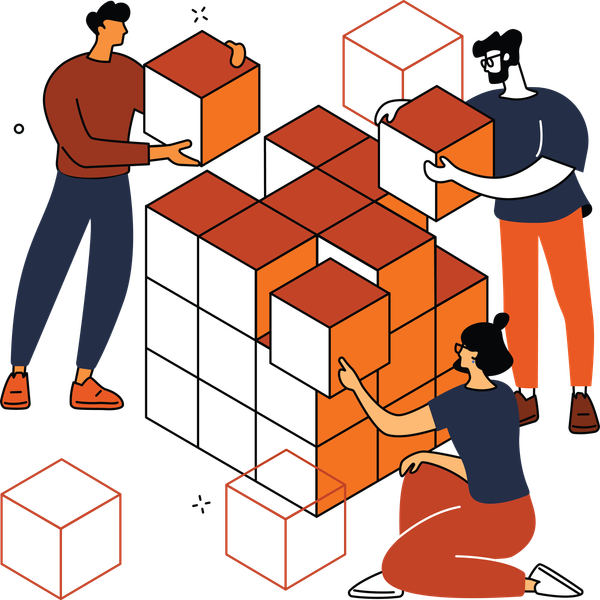What is the IDLC and Why Does it Matter for Enterprise?

Enterprise software has come a long way. We've systematized development through agile methodologies, hardened our deployment pipelines with CI/CD, and matured operations with observability, governance, and version control and yet - there’s one area where chaos still reigns: integrations.
Even in 2025, many enterprises treat integrations as if they’re break-fix projects or temporary duct tape rather than long-term infrastructure. It’s common to see organizations rely on one-off scripts, brittle ETL jobs, or connector chains that nobody fully understands. That’s precisely why we’re formalizing a concept that’s long overdue: the Integration Delivery Lifecycle—or IDLC.
If you're familiar with the Software Delivery Lifecycle (SDLC), this won't feel foreign. The IDLC mirrors the discipline of the SDLC but applies it to a different layer of the stack—the connectivity layer. In short, it provides a structured methodology for how integrations should be scoped, designed, developed, deployed, and maintained as part of an enterprise’s digital backbone

Think about this: when a new business unit adopts a SaaS tool like NetSuite, HubSpot, or Workday, someone eventually has to ask, “How do we make this talk to everything else?” The answer is almost always more complex than expected. APIs vary wildly across systems. Data schemas don’t align. Some tools offer webhooks, others only batch exports, and when integration is handled informally—say, through a hastily built Python script—there’s no version control, no monitoring, no visibility.
Take this common example: an ops team needs to sync order data from a legacy ERP to a cloud-based fulfillment tool. A developer might quickly spin up a script using the requests library in Python:

With well-defined contracts, development becomes faster and less brittle. Integration engineers can use no-code platforms like Lumino to orchestrate flows visually—or generate them programmatically via SDKs. For cases requiring custom logic, development can be modular, using containers or serverless functions (e.g., AWS Lambda) to handle data transformations asynchronously:

Testing is where most ad hoc integration efforts fall apart. The IDLC demands both functional testing—does the integration work under expected input—and edge case testing. What happens if an API times out? If a payload contains null values? If duplicate records are received? Sophisticated integration platforms like Lumino allow for environment-based staging and runtime simulations to catch these issues before production.
Deployment in the IDLC is not just about “turning it on.” It includes monitoring hooks, rollback protocols, and staged rollouts. This is where integrations stop being invisible and start being observable. Enterprises can use platforms like Datadog, New Relic, or even Lumino’s native dashboards to monitor flow health, identify latency spikes, and alert on failure thresholds. A sample Prometheus query might look like:

Which, when triggered, alerts your devops team to repeated failures in the fulfillment sync pipeline.
Finally, there’s maintenance. This is where lifecycle thinking truly shines. APIs will deprecate. Business logic will change. Data contracts will evolve. The IDLC supports these changes with built-in governance: versioning control, scheduled regression testing, and impact analysis. Instead of scrambling every time an integration breaks, teams have a clear, proactive roadmap.
So why does this matter in 2025? Enterprises are no longer simply building apps—they're building ecosystems. Those ecosystems thrive or fail based on the strength of their integrations. In industries like logistics, the real-time flow of goods is only as accurate as the data integrations powering inventory, transportation, and fulfillment. In healthcare, patient safety increasingly depends on data interoperability across labs, providers, and insurers. In retail, unified customer experiences are driven by hundreds of backend API connections between commerce engines, marketing platforms, and loyalty systems.

This complexity cannot be managed with spreadsheets and stopgap code. It demands a lifecycle approach—one that views integrations as strategic assets, not reactive fixes.
At Ariox, the IDLC isn’t just a framework—it’s how we build. Lumino was designed from the ground up to enable lifecycle-based integration delivery. With reusable workflow templates, built-in observability, audit trails, and error handling, Lumino allows enterprises to scale integrations confidently. Whether you’re deploying a no-code flow or embedding Lumino into your CI/CD pipeline, you’re operating within a system designed for resilience and growth.
In a landscape where agility defines competitive edge, the Integration Delivery Lifecycle gives enterprises the operational maturity to adapt, respond, and thrive. Integrations may have started as back-office concerns—but in 2025, they are the infrastructure of innovation. The IDLC is how we meet that moment.
Ready to learn more about how integrations and their lifecycle can support enterprises like yours? Reach out to us to get started or take a look at our on-demand Lumino product tour.